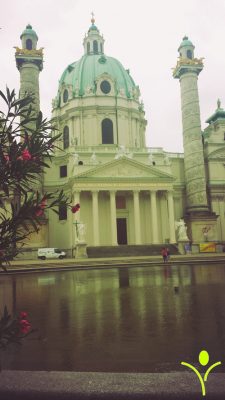In the decades following the Turkish Wars (1690-1730), Vienna grew into an international center for the arts. During this period of intensive reconstruction, the court, the aristocracy and the church commissioned monumental buildings that still define the face of the city today, such as the Schönbrunn Palace, the Karlskirche and the Upper and Lower Belvedere. Combining architecture, sculpture and painting, such baroque “Gesamtkunstwerke” or total works of art, were meant to reflect both the social position and the intentions of their builders. The most important architects of this period were Johann Bernhard Fischer von Erlach and Johann Lukas von Hildebrandt. Karlskirche in Karsplatz
Karlskirche in Karsplatz
Artists such as Johann Michael Rottmayr and Daniel Gran produced monumental frescos and painting with religious or mythological themes. At the court of Franz I and Maria Theresia, an artist of Swedish origins, Martin von Meytens, exercised the all-important role of imperial portrait painter. From all over the Europe, artists and design experts flocked to Vienna.
Of particular cultural and political significance was the founding of the Academy of Fine Arts under Karl VI. Although at firs administered privately, the Academy was reorganized as a state-run public institute in 1726 on the initiative of its master, Jacob von Schuppen. Women were not allowed to study or train there.
